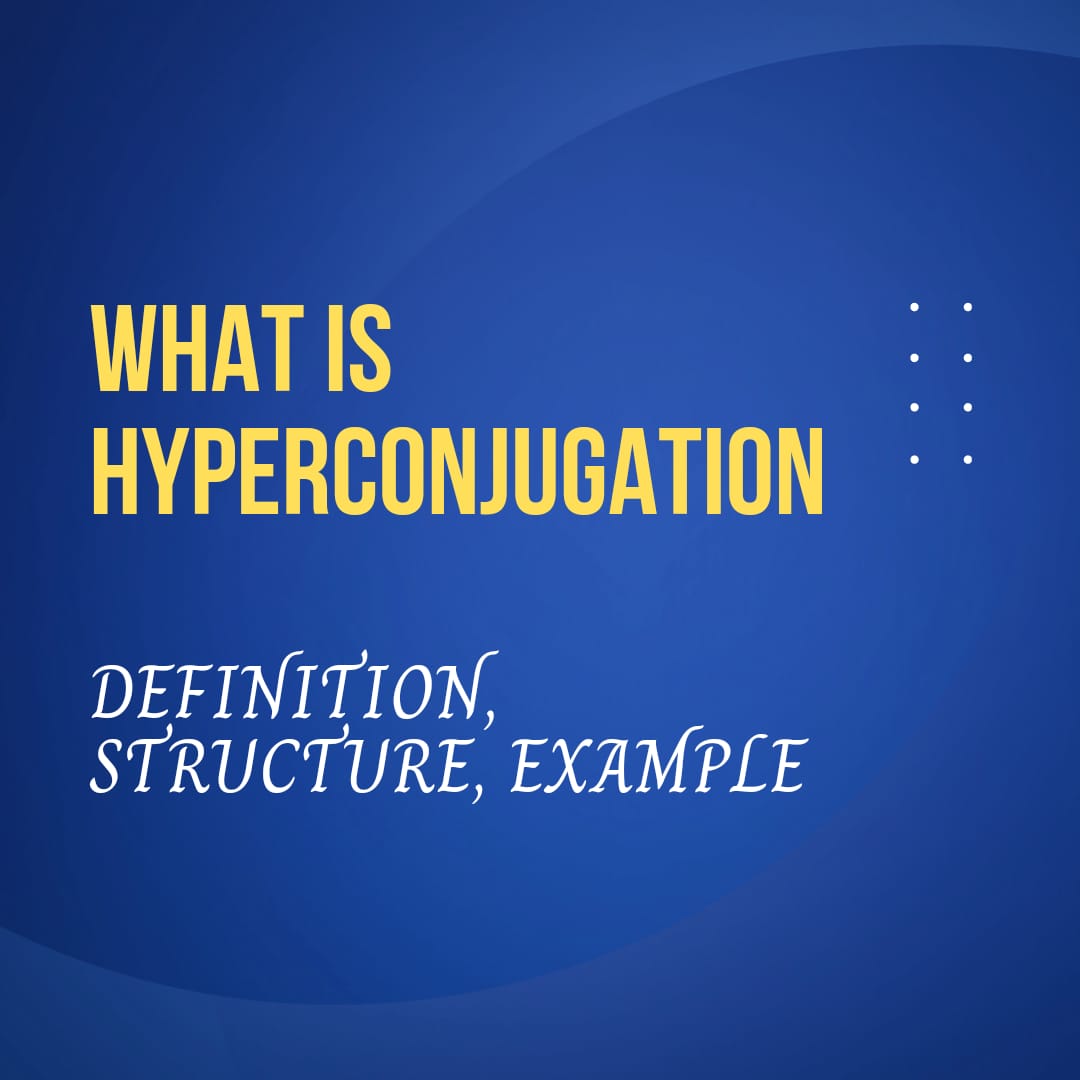Table of Contents
Definition of Hyperconjugation
When a Hydrocarbon (HC) bond is attached to an unsaturated system (—C=C— or – C = 0), then the HC bond gets conjugated with the unsaturated system. Thus, when the sigma electron of the single bond conjugates with the paired bond then it is called hyperconjugation.
In this carbon from α– Electrons are transferred towards the unsaturated carbon and the pair bond gets polarized. The ionic forms that arise as a result of electron transfer become stable.
Example of Hyperconjugation
Following are the different forms of propene-

Hyperconjugation is similar to resonance and in this also the compound becomes relatively more stable.
For example, propene is more stable than ethylene because it is a hybrid of (II), (III) and (IV). In formulas (II), (III) and (IV) there is one less covalent bond between C and H. Hence it is also called non-bond resonance.
Hyperconjugation is strengthened by the inductive effect. Its value depends on the number of H – C bonds attached to the α -carbon. Hyperconjugation effects of some groups are in the following order-
CH3 — > CH3 – CH 2 — > (CH3)2CH — > (CH3)3C-
(3 α -H) (2 α -H) (1 α -H) (No α -H)
Difference Between Resonance and Hyperconjugation
The main difference between resonance and hyperconjugation is that That is, only electrons or lone electron pairs participate in resonance, whereas in hyperconjugation, only the sigma electrons of the H-C bond get conjugated.
This effect is stronger than the inductive effect, but the order of strength of the inductive effect is opposite to it.

